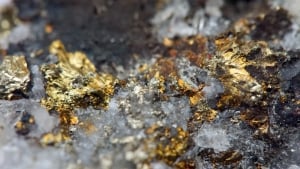
New scientific data has emerged suggesting the presence of liquid water beneath the ice cover on Uranus's moon Ariel. This was reported by Zamin.uz.
According to research conducted by scientists, this underground ocean may be much deeper than the Pacific Ocean on Earth. This discovery was published in the international journal “Icarus”.
Ariel is the brightest and fourth largest moon of the planet Uranus. Its surface is covered with ancient craters, while some areas have relatively younger geological structures.
Experts associate these changes with the activity of icy volcanoes. Additionally, cracks, ridges, and grabens on the moon's surface indicate the influence of internal pressure and external stresses.
Scientists compared models of tidal stress resulting from Ariel's orbital motion with geological maps and drew several conclusions. It was found that in the past, the moon's orbital eccentricity was 40 times higher than it is now.
If an ocean exists beneath the ice, its pressure would have caused surface deformation and the formation of large cracks. Calculations suggest that the ocean on Ariel could be up to 170 kilometers deep.
For comparison, the average depth of Earth's Pacific Ocean is only about 4 kilometers. These figures make Ariel one of the most unique moons in the Solar System.
Furthermore, researchers have previously suggested that Uranus's other moon, Miranda, may also have subsurface oceans. According to Tom Nordheim, a scientist from the Johns Hopkins University Applied Physics Laboratory, evidence supporting the existence of global oceans in the Uranus system is increasing.
This expands our knowledge of water resources in the Solar System. So far, humans have only been able to observe the southern hemispheres of Ariel and Miranda.
Future specialized missions are expected to confirm the presence of oceans on these moons and enable the study of their evolutionary processes. Additionally, recent reports have announced the discovery of ancient river traces on Mars stretching up to 15,000 kilometers in length.
These findings further enrich humanity's understanding of space and water resources.







